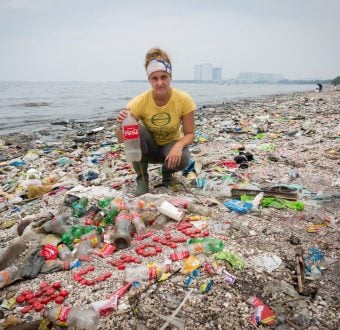Congress has debated chemical safety and security policy for twelve years and no action has been taken for reform on chemical security. However, over the last two years, the West, Texas chemical plant explosion; the toxic plume release at the Chevron refinery fire in Richmond, California and the chemical release in Charleston, West Virginia illustrate the urgent need for change.
There are many lessons from these disasters and the inherent risks these facilities pose to workers and communities. But the most important lesson is that voluntary measures do not work.
After championing chemical plant safety in the Senate, President Obama promised to deliver on reform. Today his administration has a historic opportunity to protect millions of Americans from chemical disasters. The EPA has the authority to issue new rules that will ensure that high risk chemical plants switch to safer chemicals or processes that can actually eliminate the possibility of a disaster.
Report reveals 27 incidents since 2009
This June, an Interagency Working Group comprised of the Environmental Protection Agency (EPA), Occupational Safety and Health Administration (OSHA), and Department of Homeland Security (DHS) released a report to President Obama in response to his August 1, 2013 executive order (13650) directing the EPA to modernize chemical plant safety and security policies. The executive order was issued after the April 2013 explosion at the West, Texas fertilizer plant that killed 15 people and destroyed neighboring homes, schools and a senior nursing home.
The report cites 27 significant incidents since 2009 that resulted in 75 fatalities at chemical facilities across the United States. This not only represents the lives lost of loved ones but sends a signal that the U.S. lacks common sense prevention policies to ensure the safety of 110 million Americans living in chemical disaster zones.
While the report lacked specific regulatory proposals it did call for promoting safer chemical processes that will prevent disasters and it signaled the release this summer of a Request for Information (RFI) that will invite public comment on long overdue rule changes in the EPAs Risk Management Program (RMP). The EPAs RMP covers 12,700 of the highest risk facilities in the United States that are required to submit worst case disaster scenarios to the EPA but it fails to require them to eliminate these scenarios. Once the RFI is released it will also kick off a 90 day public comment period where we will all be asked to weigh in for prevention.
Chemical industry stalling protection
The good, bad and ugly of the joint federal agency report is that it will release a public comment period which will call for input on needed changes to existing regulations. But it will also result in a joint EPA and OSHA Alert to make industry more aware of safer chemical processes. And lastly it will result in voluntary guidance to encourage industry to consider safer technologies and alternative practices.
Where the report fell short was in postponing enforceable regulations. Instead this is presented as one of many options in the report. The original directive from President Obama asked the agencies to propose a plan to implement new standards and regulations.
Of course the industry lobby has opposed any reform on chemical safety and security and the tired old arguments. In a statement issued by the American Chemistry Council, in response to the Working Group report to the White House, the leading chemical manufacturers release stated, we are concerned that the report calls for the development of new requirements as a means to modernizing EPA and OSHA standards. Insteadthe recommendations from the ACC are to ..consider such measures as strengthening regulatory oversight through improved enforcement, outreach and compliance assistance to support existing regulatory requirements.”
The power of chemical lobbyists in this country cannot be ignored. Theyve stalled the necessary changes to modernize chemical regulations in this country for decades. Some of the largest chemical companies including Dow, Dupont, Koch Industries and other petroleum giants such as Exxon have succeeded in blocking measures to reform of the storing, transporting and manufacturing of chemicals.
But the public has a different view. In a national poll conducted by Lake Research Partners found a large majority of likely voters in this country that believe the federal government should require chemical facilities to use safer chemical and processes.
School children in danger
Two recent reports underscored the injustice of who is put in harms way. The Center for Effective Government released a mapping tool earlier this year that examined the total number of schools in the country that are within a mile of an RMP facility. There are 4.6 million children at nearly 100,000 schools that are within a mile of an RMP facility. The EPAs RMP facility reporting program represents the facilities that produce, store and use large amounts of dangerous chemicals which would put children at risk if there was a release.
In a demographic analysis of populations living near chemical plants by the Environmental Justice and Health Alliance (EJHA) examined 3,433 facilities that represent some of the highest risk facilities. The report found that the populations living closest to these facilities have lower average housing values and incomes below the national average. The majority of these communities are more likely to be African American or Latino.
Greenpeace has been committed to real action on chemical safety and security and has worked with over 100 groups representing environmental justice, labor, and public health in the Coalition to Prevent Chemical Disasters to hold President Obama to his 2008 promiseto issue regulations. The President stated in 2008 to establish a clear set of federal regulations that all plants must follow, including using safer technology, such as less toxic chemicals.”




